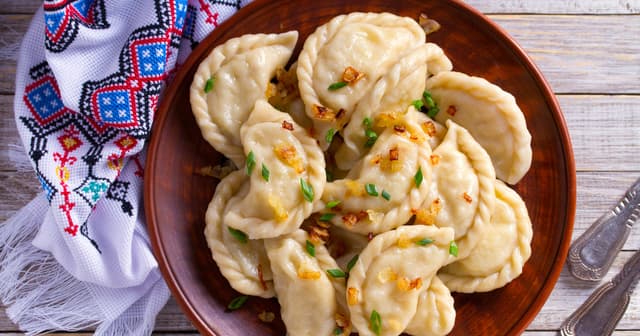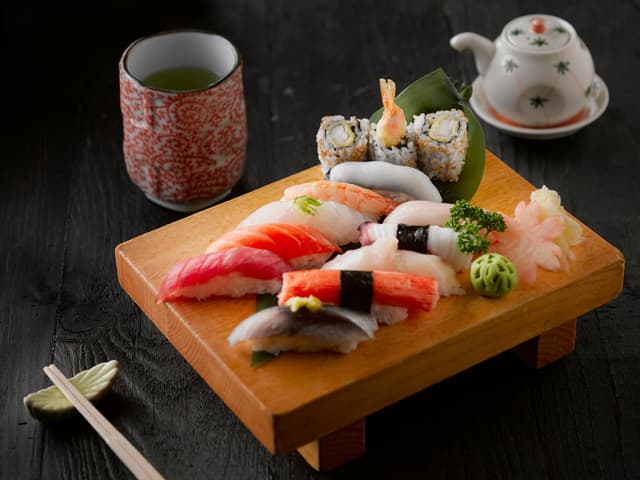Polish Cuisine vs. Japanese Cuisine
Polish Cuisine
Polish cuisine is all about comfort, rich flavors, and tradition. It’s the kind of food that sticks to your ribs, perfect for long winters and big family gatherings. Think hearty soups, meat-heavy dishes, and a lot of potatoes, cabbage, and bread. Pierogi are probably the most famous Polish dish—soft dumplings filled with anything from potato and cheese to meat, mushrooms, or sweet fruits. Then there’s bigos, a slow-cooked hunter’s stew packed with sauerkraut, fresh cabbage, sausage, and sometimes even wild game. It’s the kind of dish that gets better the longer it sits. If you like schnitzel, you’ll love kotlet schabowy, a breaded pork cutlet usually served with mashed potatoes and pickled cucumber salad. And for something truly Polish, there’s żurek—a sour rye soup with sausage and egg, often served in a bread bowl. Poland is also big on fermented foods like ogórki kiszone (pickled cucumbers) and kapusta kiszona (sauerkraut), which add a tangy kick to meals. And if you have a swee...
Japanese Cuisine
The Japanese cuisine has given us so much it's hard to even find a place to start. You've got your sushi, ramen, udon, edamame, mochi balls, tempura, soba, bento boxes, sukiyaki, gyoza, onigiri, yakisoba, miso soup... They could be number one on this list based on the sushi alone!
Reviews
Reviewed on 2/28/2025
Kind of heavy but delicious. Lots of cheese, meat, potatoes and cabbage. Also, many many soups. Pierogi, bigos, kiełbasa, gołąbki, borsch.
Reviews
| Item | Votes | Upvote |
|---|---|---|
| delicious | 2 |
| Item | Votes | Upvote |
|---|---|---|
| No cons yet, would you like to add one? | ||
| Item | Votes | Upvote |
|---|---|---|
| Super healthy | 1 |
| Item | Votes | Upvote |
|---|---|---|
| Expensive | 1 |
Frequently Asked Questions
Japanese Cuisine is often considered healthier due to its emphasis on fresh, raw ingredients like sushi and sashimi, as well as its use of vegetables and lean proteins. Polish Cuisine, on the other hand, tends to be heavier with a focus on meats, cheeses, and potatoes. While both cuisines have their own unique health benefits, Japanese Cuisine generally has the edge in terms of healthiness.
Polish Cuisine is generally more affordable compared to Japanese Cuisine. Japanese dishes often incorporate expensive ingredients such as fresh fish and seafood, and the preparation can be intricate, leading to higher costs. Polish Cuisine uses more common and less expensive ingredients like potatoes, cabbage, and meat, making it a more budget-friendly option.
Popularity can vary by region, but globally, Japanese Cuisine tends to be more popular. Dishes like sushi, ramen, and tempura have gained international recognition and are widely available in many countries. Polish Cuisine, while beloved, is less globally widespread and tends to be more popular in regions with significant Polish communities.
Both Japanese and Polish cuisines offer a great variety of soups. Japanese Cuisine features miso soup, ramen, udon, and soba soups, among others. Polish Cuisine is also rich in soups, with options like borsch, żurek, and rosol. The variety in both cuisines is extensive, making it difficult to say which offers more.
Polish cuisine is characterized by comfort, rich flavors, and tradition. It features hearty soups, meat-heavy dishes, and staples like potatoes, cabbage, and bread. Some of the most famous dishes include pierogi (dumplings), bigos (hunter's stew), kotlet schabowy (breaded pork cutlet), and żurek (sour rye soup). Desserts like pączki (doughnuts) and sernik (cheesecake) are also popular, and meals are often accompanied by vodka or tea.
The pros of Polish cuisine include its delicious and hearty nature, with a focus on comfort food that is perfect for family gatherings. Users have noted that the food is rich in flavors and offers a variety of dishes. However, there are no specific cons listed, though some may find the cuisine to be heavy due to its meat and cheese content.
Some popular dishes in Polish cuisine include pierogi (dumplings filled with various ingredients), bigos (hunter's stew), kotlet schabowy (breaded pork cutlet), and żurek (sour rye soup). Additionally, fermented foods like ogórki kiszone (pickled cucumbers) and desserts such as pączki (doughnuts) and sernik (cheesecake) are also well-loved.
Polish cuisine is often paired with vodka, which has a long-standing tradition in Poland. For those who prefer milder options, hot tea with lemon or kompot, a homemade fruit drink, are also popular choices to accompany meals.
Dining on Polish cuisine typically evokes a warm and inviting atmosphere, perfect for family gatherings and celebrations. The focus on hearty, comforting dishes creates a sense of home and community, making it a delightful experience for those who enjoy rich flavors and traditional meals.
Pros of Japanese Cuisine include that it is super healthy. Cons of Japanese Cuisine include that it can be expensive.
Popular dishes in Japanese Cuisine include sushi, ramen, udon, edamame, mochi balls, tempura, soba, bento boxes, sukiyaki, gyoza, onigiri, yakisoba, and miso soup.
Japanese Cuisine is considered healthy due to its emphasis on fresh ingredients, balanced meals, and cooking methods that preserve nutrients. Dishes often include fish, vegetables, rice, and soy products, which contribute to a nutritious diet.
Yes, Japanese Cuisine can be expensive, especially when dining at high-end sushi restaurants or ordering specialty items. However, there are also more affordable options like ramen shops and casual eateries.
Related Content & Alternatives
- 3
 1.Ireland
1.IrelandIreland is a small country with a big presence. Its capital, Dublin, is a lively city known for its mix of history, culture, and modern energy. Walk through the streets and you’ll find Georgian buildings, contemporary architecture, and plenty of places to hear live music or have a chat over a coffee—or a pint. The country has changed a lot over the past few decades. Once more rural and conservative, modern Ireland is progressive and increasingly diverse. It's known for its strong economy, driven in part by tech and finance companies that have set up shop in Dublin. But away from the business districts, life moves at a slower pace, especially in smaller towns and the countryside. Culture runs deep. Ireland has long punched above its weight in literature, music, and the arts. Writers like James Joyce and W.B. Yeats are still celebrated, but contemporary authors, filmmakers, and musicians continue to make their mark. Traditional Irish music hasn’t faded—it just sits comfortably alongside modern genres, often blending with them in interesting ways. Dance, especially the kind popularized by Riverdance, remains part of the cultural fabric without feeling forced or overly nostalgic. Food in Ireland has shifted from its meat-and-potatoes reputation. While hearty stews and fresh-baked bread are still common, there’s been a focus on fresh, local ingredients and creative cooking. In coastal areas, you’ll find top-quality seafood, and farmers' markets are popular across the country. Sport plays a big part in daily life. Gaelic games like football and hurling are uniquely Irish and deeply connected to local pride, but people follow soccer, rugby, and golf with just as much enthusiasm. While Ireland’s landscape is famous—green fields, dramatic coastlines, and rugged hills—it’s not just postcard scenery. Many people live in suburban areas, and the country has seen growing urban development. Still, nature is never far away. Ireland’s recent history includes both economic highs and lows, as well as major social changes. The country has legalized same-sex marriage, eased restrictions on abortion, and shifted away from the strong influence of the Catholic Church. Yet, traditional values like community and hospitality haven’t disappeared—they’ve just adapted to a changing world. At its core, Ireland is a place that blends the old with the new. It’s a country where centuries-old traditions coexist with modern ideas, where the past is present but doesn’t overshadow the future.
- 2
 2.Poland
2.PolandPoland sits in Central Europe, stretching from the Baltic Sea in the north to mountains in the south. It shares borders with Germany to the west, Lithuania and Russia to the northeast, and several other countries along the east and south. Its landscape is a mix—flat plains in the center and north, and hilly or mountainous areas in the south. The coastline along the Baltic Sea is known for sandy beaches and coastal ridges. Inland, there are thousands of lakes, especially in the northeast, and big rivers like the Vistula and Oder cut across the land. The weather is temperate. Summers are warm, winters moderately cold. Rain tends to fall more during the summer months, and winters are becoming drier over time. Poland has deep roots in European history. It became a kingdom in 1025, later forming a powerful union with Lithuania. The Polish–Lithuanian Commonwealth was once one of Europe’s biggest states, with a unique political system. Poland's fortunes shifted in the late 18th century, when its neighbors carved it up, erasing it from maps for over a century. It re-emerged after World War I, only to be invaded at the start of World War II—a conflict that brought devastation and the horrors of the Holocaust. After the war, Poland fell under Soviet influence, but by 1989, it was the first Eastern Bloc country to shake off communism, thanks largely to the Solidarity movement. Today, Poland is a democratic country with a population of over 38 million. Warsaw, the capital, is the largest city. Others like Kraków, Gdańsk, and Wrocław are known for historic centers and vibrant culture. The economy is strong, with Poland being one of the larger economies in the European Union. Nature lovers come for places like the Tatra Mountains or the ancient Białowieża Forest, home to Europe’s largest land mammal—the European bison. There are 23 national parks, and over 17 sites are recognized as UNESCO World Heritage locations, from medieval town squares to the haunting Auschwitz-Birkenau memorial. Culturally, Poland has a rich tradition of music, literature, and art. Composer Frédéric Chopin and novelist Joseph Conrad both came from here. More recently, Poland’s fantasy literature, like Andrzej Sapkowski’s The Witcher series, has found global fame. Polish cuisine is hearty, with dishes like pierogi (dumplings), bigos (a cabbage and meat stew), and żurek (sour rye soup). Vodka has its roots here, but beer and wine are also popular. Sports are big in Poland—football (soccer) is a national passion, though volleyball and speedway racing attract large crowds too. The country also boasts top tennis players like Iga Świątek and mountaineers who’ve climbed the world’s highest peaks. Despite its complicated past, Poland today balances its historical heritage with modern growth. Old town squares sit beside new buildings, and traditions are kept alive alongside a fast-developing economy and infrastructure.
- 2
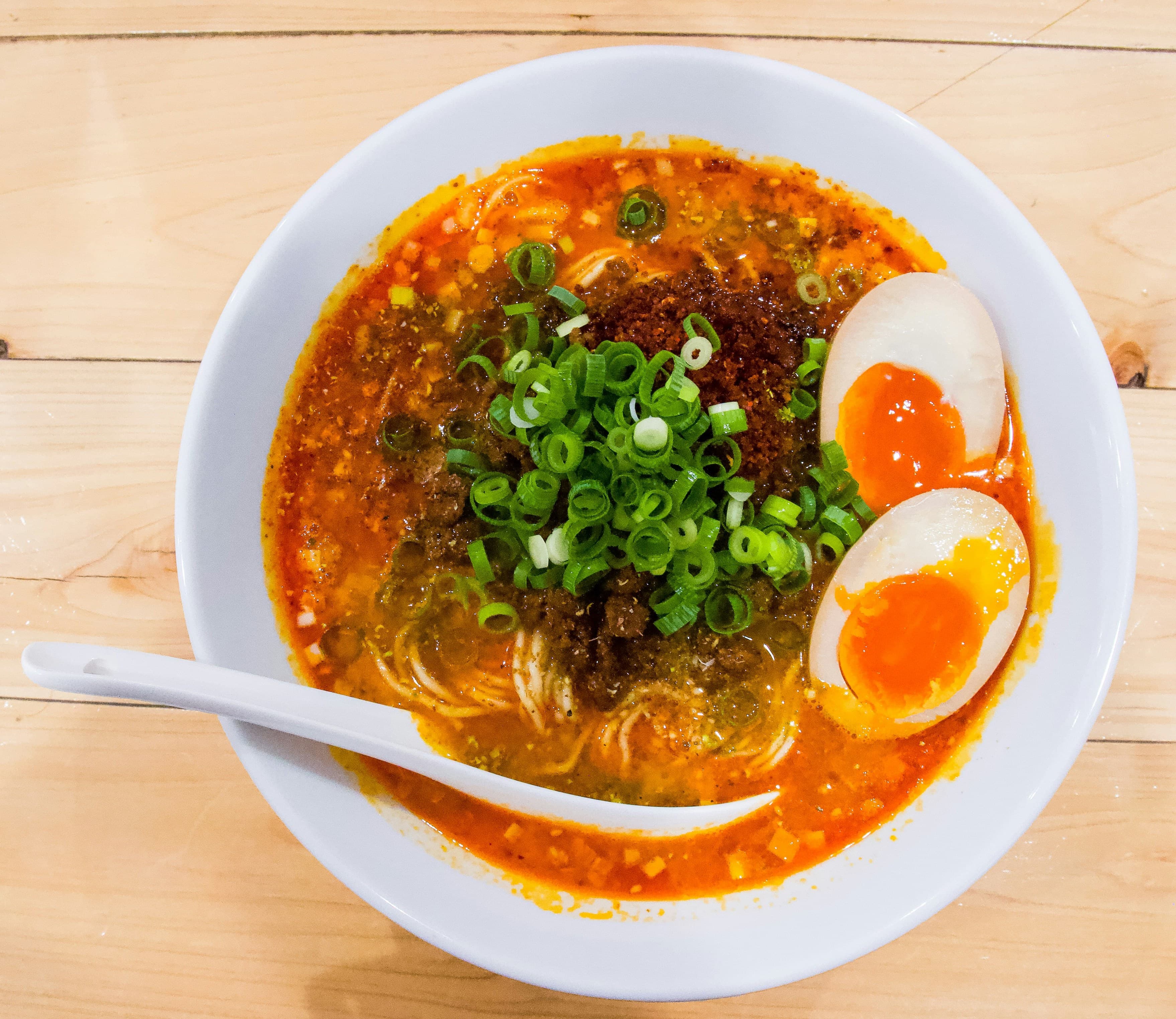 1.Tantanmen
1.TantanmenAlso know as Tan Tan Ramen. This is the best ramen, period. Rich, creamy, and spicy, topped with eggs and ground pork. It has a distinctive flavor thanks to the use of chili oil and doubanjiang, a type of spicy bean paste. It originated from similar Sichuanese dish called Dandan noodles.
- 2
 2.Piri Piri Roast Chicken
2.Piri Piri Roast ChickenPiri Piri roast chicken is arguably the best dish for those who cherish bold flavours and succulent meat. The dish’s main draw is the Piri Piri sauce—a fiery blend of chilli peppers, garlic, lemon, and herbs that hails from Portuguese cuisine but is infused with African influence, giving it a tantalizing kick. The chicken is marinated in this spicy sauce, allowing the robust flavours to penetrate deeply and ensuring every bite is infused with spice and zest. Roasted to perfection, the skin becomes crispy and golden, while the meat inside remains tender and juicy. This delightful contrast in textures, combined with the heat from the Piri Piri sauce, offers a sensory experience that is both satisfying and exhilarating. The dish’s simplicity, requiring few ingredients but delivering complex flavour profiles, makes Piri Piri roast chicken not just a meal but an experience—one that celebrates the harmony of heat, spice, and expert culinary technique.
- 1
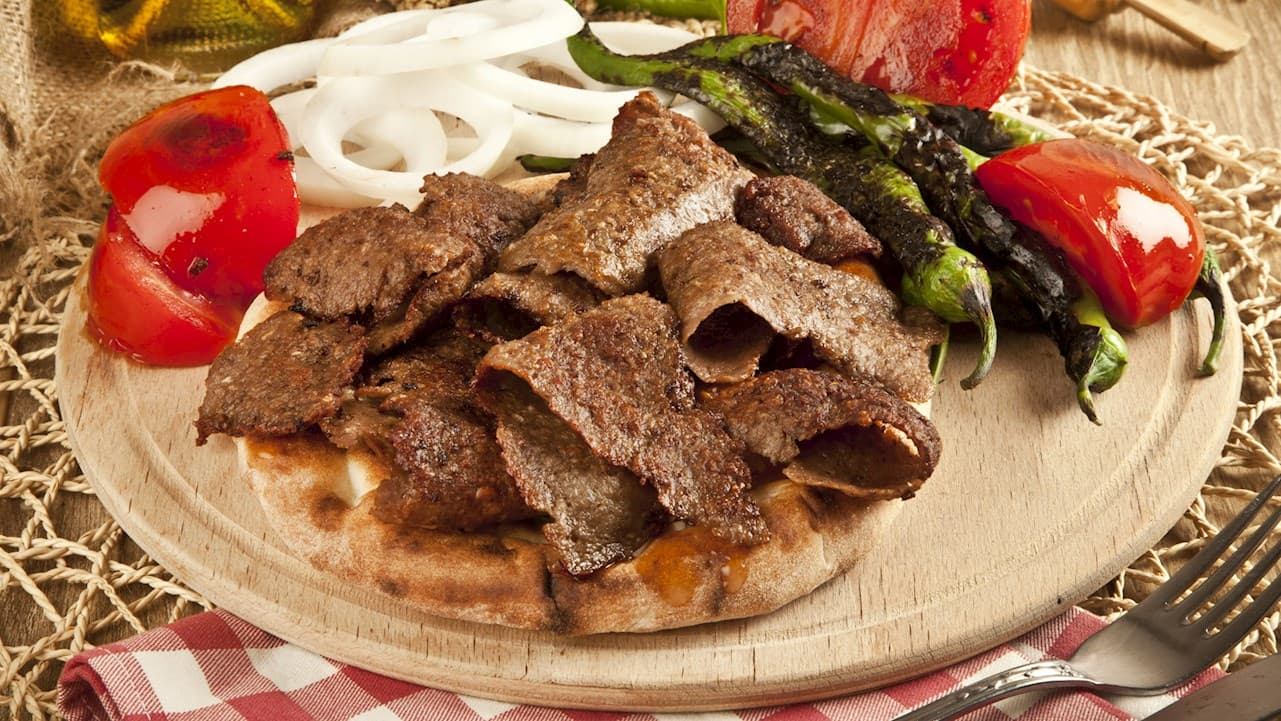 3.Doner Kebab
3.Doner KebabDoner Kebab, with its perfectly spiced, succulent slices of meat crisped to perfection, nestled in fresh, fluffy bread, and complemented by an array of vibrant, tangy sauces and fresh vegetables, offers an unrivaled symphony of flavors. This culinary masterpiece marries the art of seasoning and grilling, making each bite an unforgettable taste sensation that dances across the palate. Its universal appeal lies not just in its deliciousness, but in its ability to bring together the best of global flavors, making it a top contender for the best-tasting dish in the world.
- 0
 4.Pierogi Ruskie
4.Pierogi RuskieThe quintessential Polish dish. Made with white cheese, potatoes, salt, pepper, and onions. Topped with sour cream and bacon. Yum!
- 0
 5.Currywurst
5.CurrywurstCurrywurst is a German street food made of a pork sausage, usually a bratwurst, that's grilled or fried, then sliced into bite-sized pieces. It's topped with a curry-flavored ketchup sauce—basically a mix of ketchup, curry powder, and sometimes extra spices like paprika. It’s often served with fries or a bread roll to mop up the sauce. It was first made in Berlin in 1949 by a woman named Herta Heuwer, who got ketchup and curry powder from British soldiers after World War II. She mixed them up, poured it over some sausage, and started selling it at a street stand. It caught on fast, especially with construction workers rebuilding the city. Today, you can find currywurst all over Germany, but Berlin is still its unofficial home. There used to be a whole museum dedicated to it, which shows how much people love the stuff. You usually get it on a paper plate with a tiny wooden fork, and everyone has their preference—some like more curry powder on top, others a spicier sauce. Volkswagen even makes its own currywurst for employees, which is a bit wild when you think about a car company also being a sausage producer. All in all, it’s simple, messy, and filling—the kind of food you grab when you’re hungry and don’t want to overthink it.
- 3
 2.Thai Cuisine
2.Thai CuisineThai cuisine is all about bold flavors, fresh ingredients, and a balance of sweet, sour, salty, bitter, and spicy tastes. Every meal feels like a mix of contrasts that somehow just works. You’ve got fragrant herbs like lemongrass, Thai basil, and kaffir lime leaves, paired with staples like fish sauce, chili, and coconut milk. Rice is at the heart of it all—jasmine rice is common in central and southern Thailand, while sticky rice rules up north and in the northeast. Meals are usually shared. There’ll be a spread of dishes—maybe a curry, a stir-fry, a soup, and a salad—all eaten with rice in the middle. The idea is to balance flavors across the meal rather than in just one dish. You might get the rich creaminess of massaman curry alongside the sharp, spicy crunch of som tam (green papaya salad) and the comforting warmth of a clear broth like tom yum. Street food is a huge part of everyday life. Walk down any road and you’ll find vendors grilling skewers of marinated meat, tossing noodles in sizzling woks, or dishing up hot bowls of noodle soup. Grab a plate of pad Thai, a bag of fried chicken with sticky rice, or a steaming bowl of boat noodles from a floating market. And if you’ve got a sweet tooth, there’s mango sticky rice, coconut-based desserts, and crispy pancakes filled with sweet custard. Different regions have their own twist. In the north, dishes like khao soi—a curry noodle soup topped with crispy noodles—are popular, while the northeast (Isan) is known for grilled meats, sticky rice, and punchy salads. Down south, expect fiery curries with plenty of coconut milk and fresh seafood. Even breakfast can be exciting—sometimes just rice and an omelet, other times noodle soups or patongko (Thai donuts) with sweetened condensed milk. No matter where you go in Thailand, the food is vibrant, flavorful, and often made to be enjoyed with others. It’s comforting, lively, and always about that perfect mix of flavors.
- 2
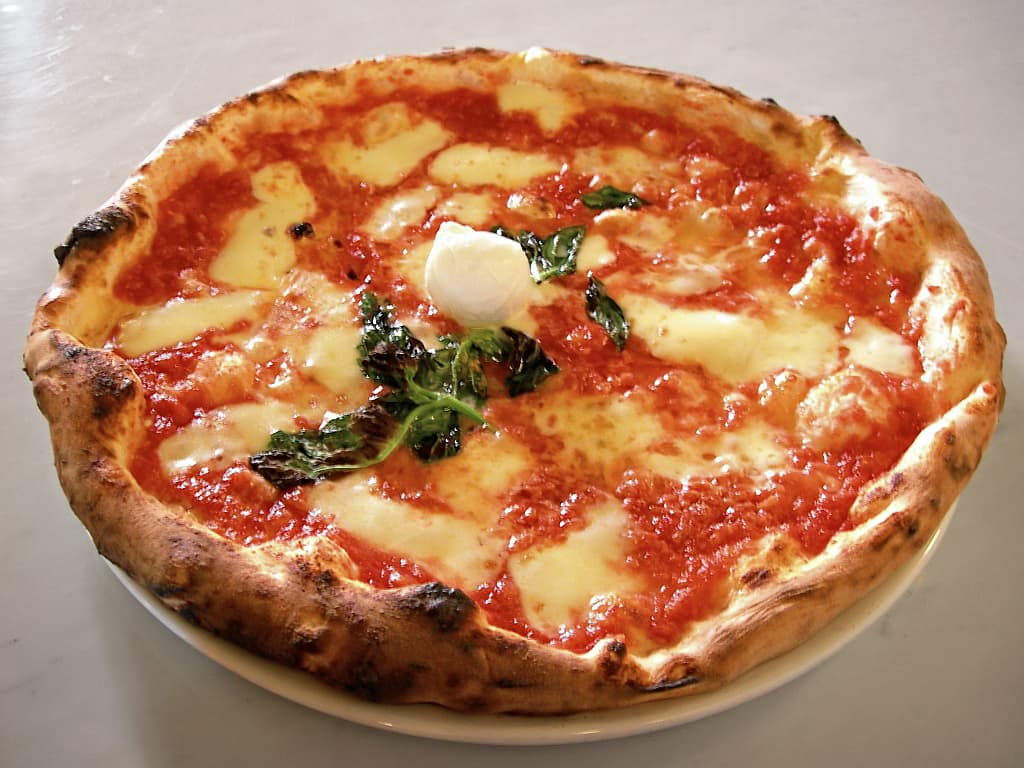 3.Italian cuisine
3.Italian cuisineThe one that we all know and love. Pizza, pasta, risotto, gnocchi, tortellini and many, many more. Also ice cream aka gelato. And limoncello. And wine. Italians love food and it shows.
- 2
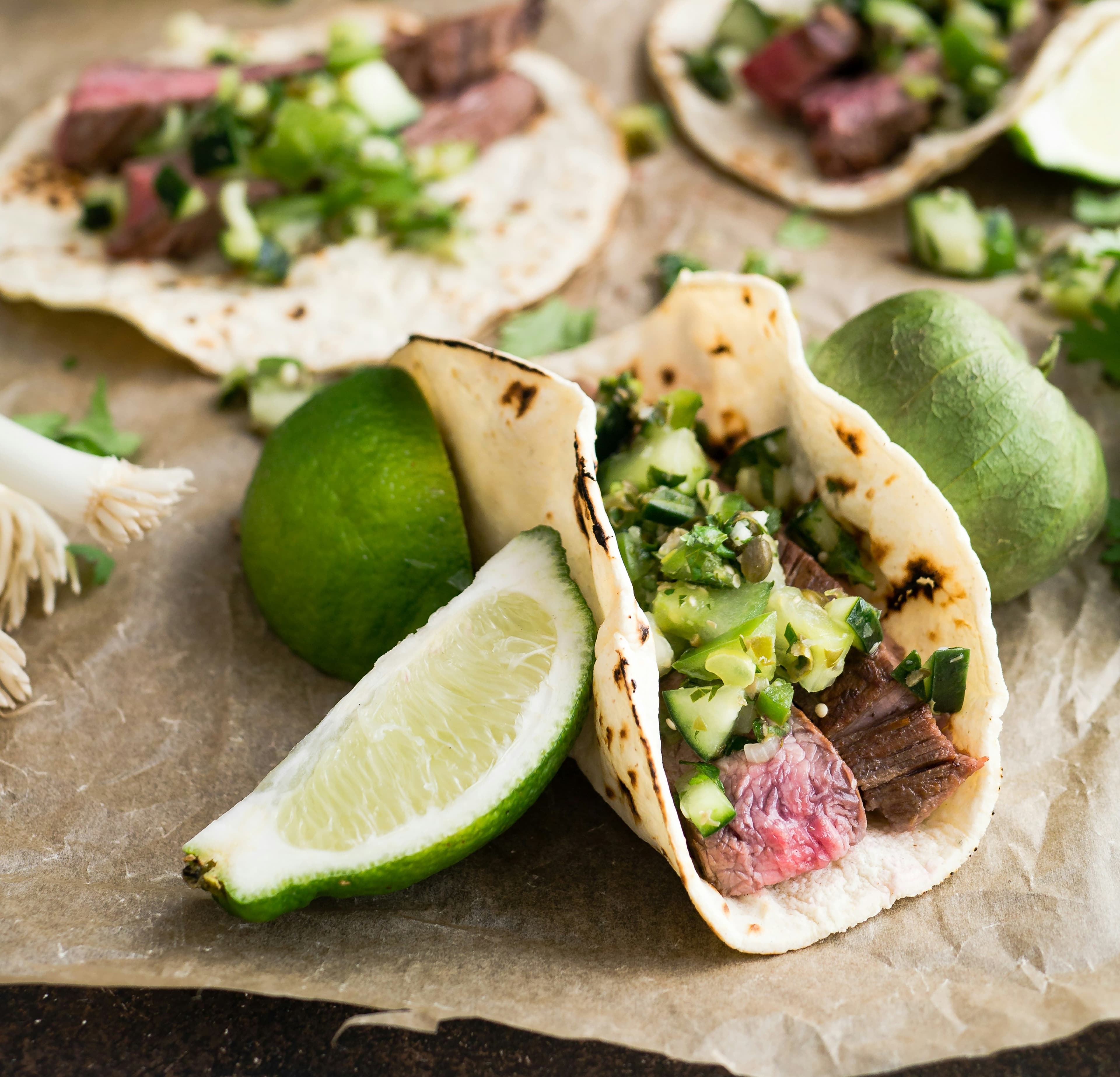 4.Mexican Cuisine
4.Mexican CuisineThe one that we all know and love! Tacos, nachos, burritos, guacamole, quesadilla, tamales - I could go on and on! Spicy, tasty and full of fresh ingredients.
- 1
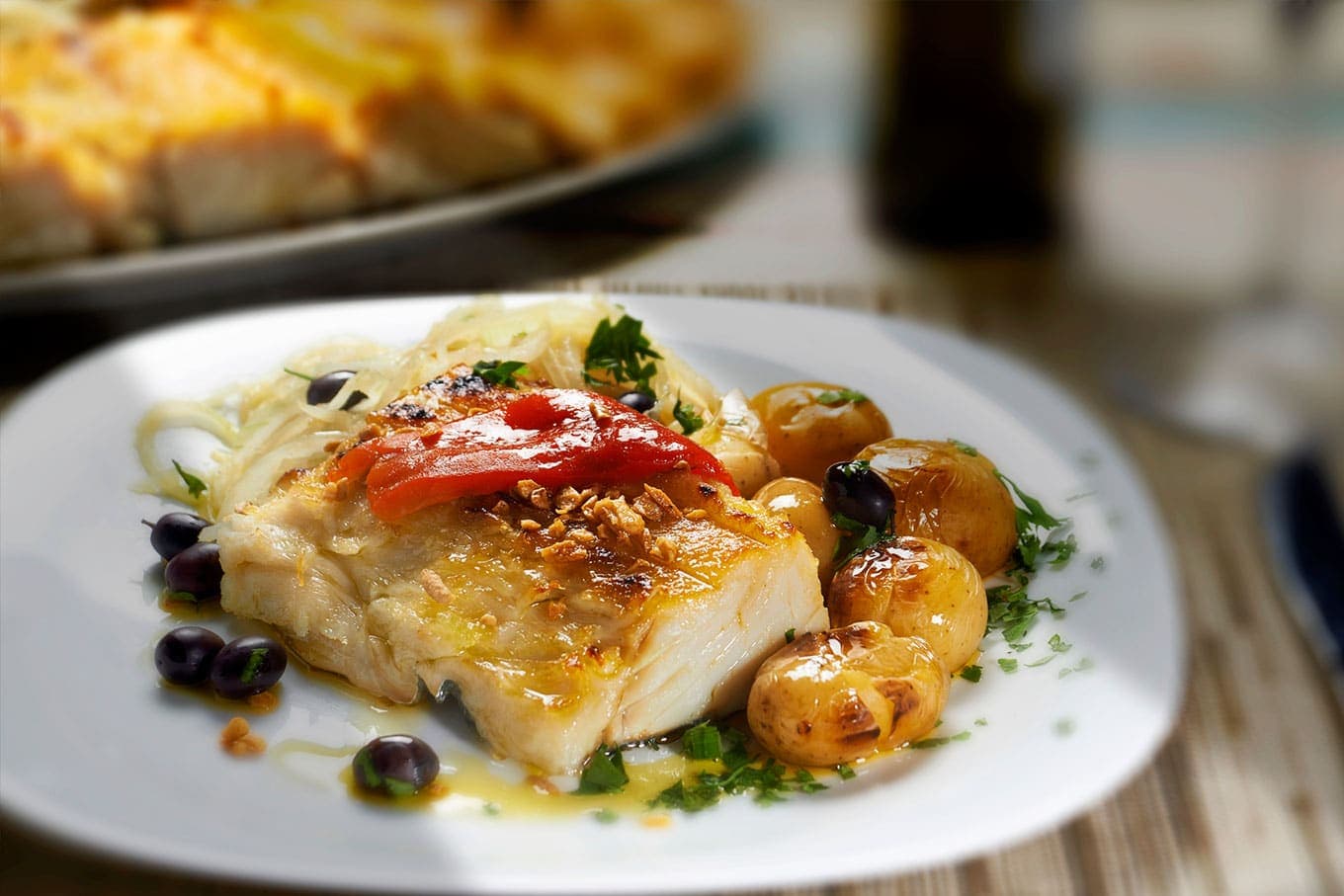 6.Portuguese Cuisine
6.Portuguese CuisinePortuguese cuisine stands as a prime contender for the title of the best food in the world, thanks to its rich culinary traditions, emphasis on fresh ingredients, and a harmonious blend of flavours that reflect its historical maritime prowess. Here's a compelling argument that underscores why Portuguese food deserves this accolade: Diversity Influenced by History and Geography Portuguese food is a palimpsest of the various cultures that have interacted with Portugal over centuries. From the Age of Discoveries when Portuguese explorers brought back spices from Africa and Asia, to the integration of New World crops such as tomatoes and potatoes, the cuisine reflects a synthesis of global flavours uniquely blended with traditional Iberian techniques. This historical melding of east and west, north and south, makes Portuguese cuisine not only diverse but uniquely rich and varied. Focus on High-Quality, Fresh Ingredients At the heart of Portuguese cuisine is the use of fresh, high-quality ingredients. The country's extensive coastline provides an abundance of fresh seafood, from sardines and bacalhau (dried and salted cod) to octopus and various shellfish, which are staples in the Portuguese diet. The emphasis on fresh, local produce and the traditional farming and fishing techniques enhance the natural flavours of the ingredients, allowing for dishes that are both simple and profoundly satisfying. Culinary Techniques that Enhance Flavour Portuguese cooking methods themselves are a testament to a culinary tradition that prioritises flavour. The use of 'cataplana' (a clam-shaped cooker) seals in the flavours and juices of the ingredients, while techniques such as grilling over charcoal infuse dishes with a smoky richness that is hard to replicate. The simplicity of seasoning, primarily using piri-piri (small fiery chillies), garlic, and olive oil, underscores the natural tastes of the ingredients rather than overpowering them.
- 3
 1.Warsaw, Poland
1.Warsaw, PolandWarsaw is the capital of Poland, sitting on the Vistula River in the east-central part of the country. With nearly 1.9 million people in the city and over 3 million in the wider metropolitan area, it’s Poland’s biggest city. It’s a place where old and new collide—modern skyscrapers stand next to rebuilt historic districts, and its skyline is a mix of glass towers and ornate churches. The Old Town, destroyed in World War II and painstakingly rebuilt, is now a UNESCO World Heritage Site. Walking through its cobblestone streets, you’ll find the Royal Castle and the colorful Market Square. Not far off is the Royal Route, a stretch of old palaces, churches, and the Presidential Palace, leading down to the grand Wilanów Palace and its gardens. Despite the scars of war—most of the city was flattened during WWII—Warsaw bounced back fast. The post-war communist era left a mark with grey apartment blocks and the towering Palace of Culture and Science, a gift from the Soviet Union that’s still one of the tallest buildings in Poland. Now, Warsaw’s business district is full of sleek glass skyscrapers, including the Varso Tower, the tallest in the EU. Green spaces are everywhere. Łazienki Park, home to peacocks and the Chopin monument, is a popular spot for Sunday strolls. The Vistula Riverbanks are packed with bars and cycling paths in summer. Even with its urban sprawl, about a quarter of the city is covered by parks and forests. Warsaw’s history is complicated. It was once a cultural melting pot, with a large Jewish community before the Holocaust. The city remembers that past with places like the POLIN Museum and the remnants of the Warsaw Ghetto. It also honors its wartime resistance, especially the 1944 Warsaw Uprising, with monuments and the powerful Uprising Museum. The city’s cultural life is rich. It hosts jazz festivals, classical concerts (especially anything Chopin-related), and has a buzzing nightlife. Food-wise, you’ll find everything from traditional Polish pierogi and hearty soups to modern vegan spots and Michelin-starred restaurants. There’s even a strong café culture, with old-school spots alongside trendy coffee bars. Weather in Warsaw is typical for Central Europe—cold, snowy winters and warm, sometimes stormy, summers. Spring and autumn can be mild and pleasant, though the weather can change quickly. In short, Warsaw is a city of contrasts. It’s got a tragic past but a vibrant present, blending historic charm with modern energy. Whether you’re wandering through its parks, exploring museums, or sipping coffee along the river, there’s plenty to take in.
- 2
 1.Bar Mleczny Słoneczny
1.Bar Mleczny SłonecznyAn authentic Polish milk bar. Cheap and delicious. Serves typical Polish foods. Probably the most affordable place in the center of Gdynia. Can get crowded at lunch time.
- 0
 2.Ogniem i Piecem
2.Ogniem i PiecemAffordable, casual pizza place in the center of Gdynia. They serve pizza by the slice, breakfasts, pastas and cakes. It's dog-friendly, has good music, friendly atmosphere and a vaguely "street style" hip vibe.
- 0
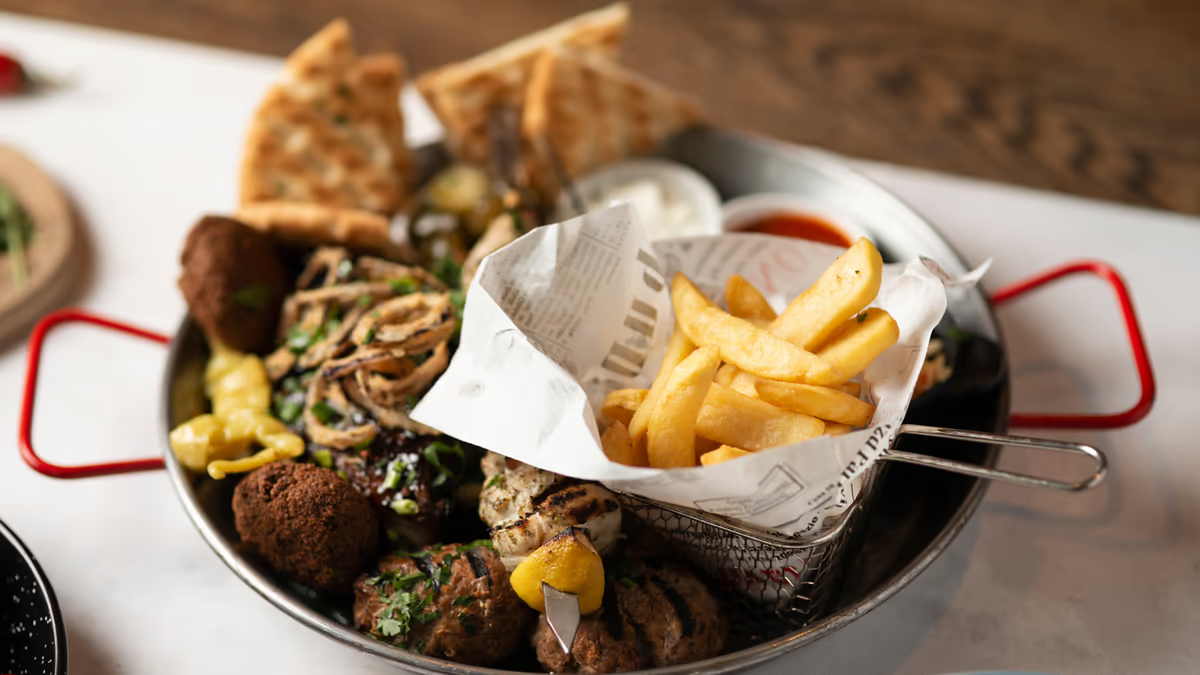 3.Taverna Zante
3.Taverna ZanteCasual Greek restaurant and cocktail bar. Tzatziki, gyros, souvlaki, that sort of thing. Outdoor seating in spring and summer. I go there a lot and the food is delicious.
- 2
 1.U.S. Embassy Warsaw
1.U.S. Embassy WarsawThe U.S. Embassy in Warsaw is on Aleje Ujazdowskie, surrounded by other embassies and government buildings. It’s a large, modern building with tight security. The embassy handles visas, helps U.S. citizens, supports American businesses, and works on diplomatic relations with Poland. It also promotes cultural exchanges and coordinates military cooperation between the two countries. Most people go there for travel documents or official matters. It’s straightforward—focused on diplomacy, paperwork, and keeping U.S.-Poland ties strong.
- 0
 1.Zaxby's Menu
1.Zaxby's MenuWhen it comes to fast food, there are a few brands that consistently stand out in the minds of food lovers across the globe. Wendy's, Zaxby’s, and Taco Bell have all earned loyal followings due to their diverse and mouth-watering menu offerings. Whether you're craving a juicy burger, crispy chicken, or bold Mexican-inspired dishes, these restaurants have something for everyone. Let's dive into the menus of each and explore what makes them unique!
- 2
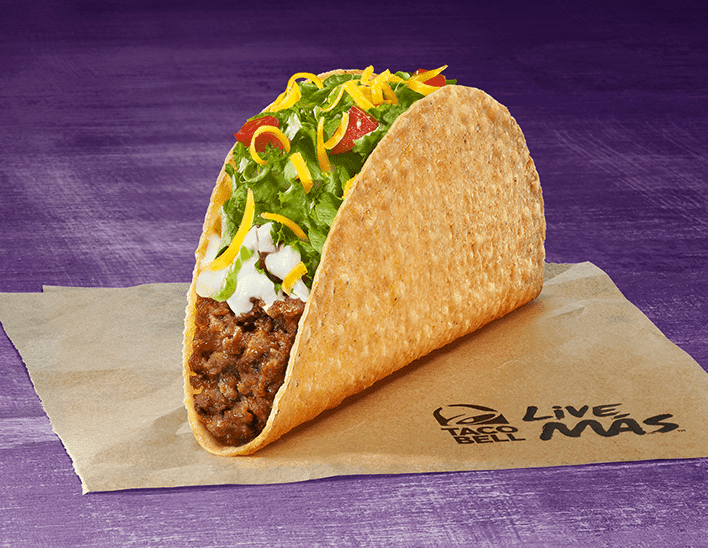 2.Taco Bell
2.Taco BellTaco Bell is a fast-food chain from the U.S. that serves Mexican-inspired food. You’ll find things like tacos, burritos, nachos, and quesadillas on the menu, plus some of their own creations like the Crunchwrap Supreme and Doritos Locos Tacos. They’re known for mixing up flavors with American-style ingredients, so don’t expect something like you’d find at an authentic Mexican place—it’s more of a quick, grab-and-go option with lots of cheese, sauces, and seasoned meats. The first Taco Bell opened in 1962 in California, started by Glen Bell. He got the idea after seeing how popular a local Mexican restaurant was. Since then, it’s grown huge, with thousands of locations not just in the U.S. but in many countries around the world. Most of the stores are run by independent owners, not directly by the company. The menu changes a lot. They’ll bring in limited-time items and have tried everything from breakfast offerings to vegan options. They also have a value menu with cheap eats if you’re on a budget. Some of their restaurants, called "Cantinas," serve alcohol and have a more modern vibe, especially in city areas. Taco Bell has done plenty of quirky promotions over the years, like offering free tacos if a base is stolen during the World Series or letting people get married at their flagship Las Vegas location. It’s the kind of place people either go to when they want something quick and filling or when they’re craving something salty and cheesy late at night.
- 1
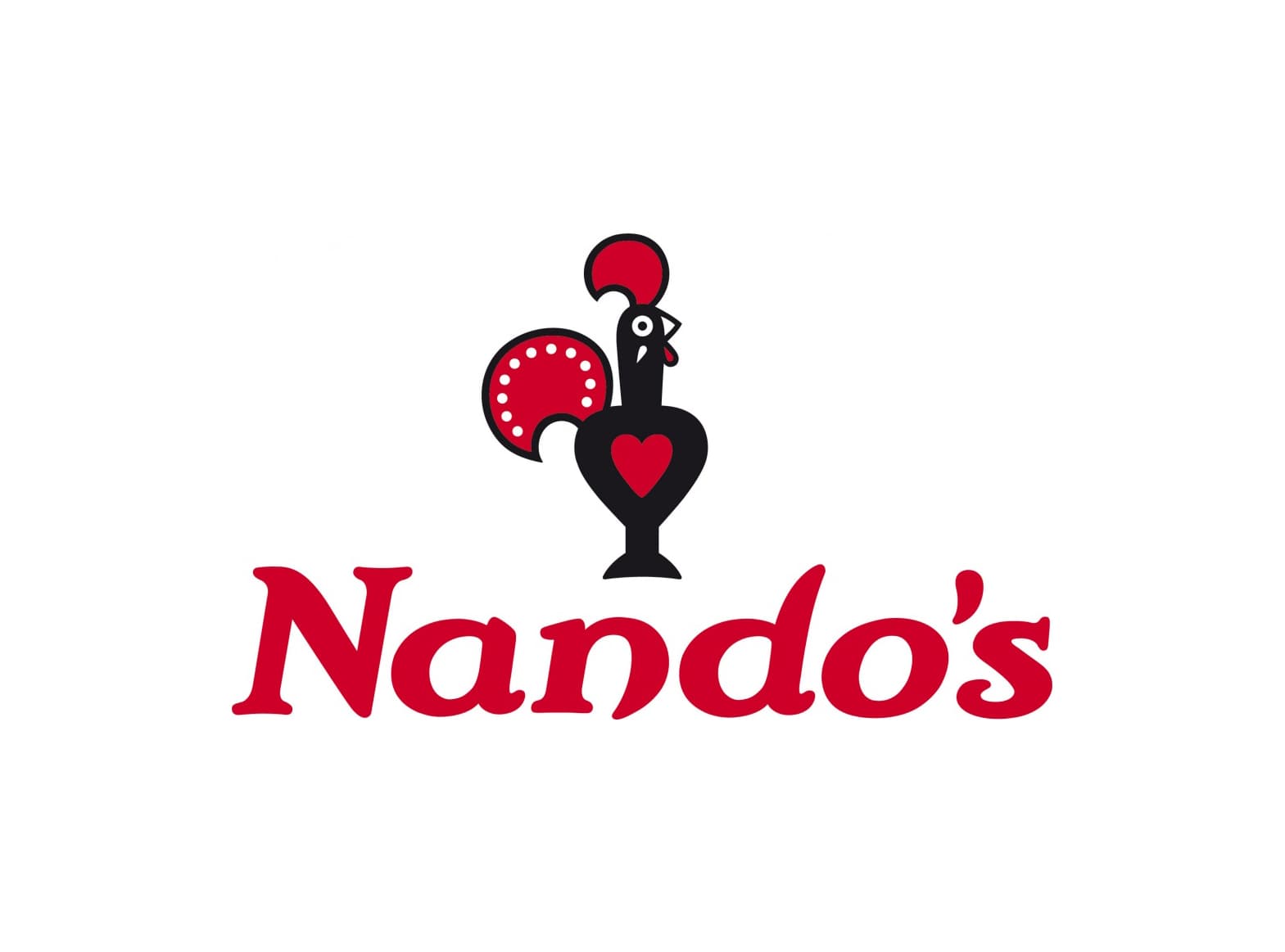 3.Nando's
3.Nando'sNando’s stands out as the best fast-food restaurant by successfully combining casual dining with high-quality, flavourful food that boasts a unique cultural heritage. Renowned for its flame-grilled piri-piri chicken, the restaurant’s roots in Southern African-Portuguese cuisine provide a distinctive spicy twist that sets it apart from typical fast-food offerings. Nando’s emphasises freshness and quality, marinating their chicken for 24 hours in their signature "peri-peri" sauce which customers can select based on their preferred spice level. This personalised spice choice, coupled with a vibrant and welcoming ambiance, makes Nando’s not just a place to eat, but a culinary experience. The brand's commitment to sustainability and ethical sourcing, including their use of higher welfare chickens and eco-friendly practices, resonates well with a globally-conscious clientele, further establishing its reputation as not only a food chain but a responsible corporate citizen.
